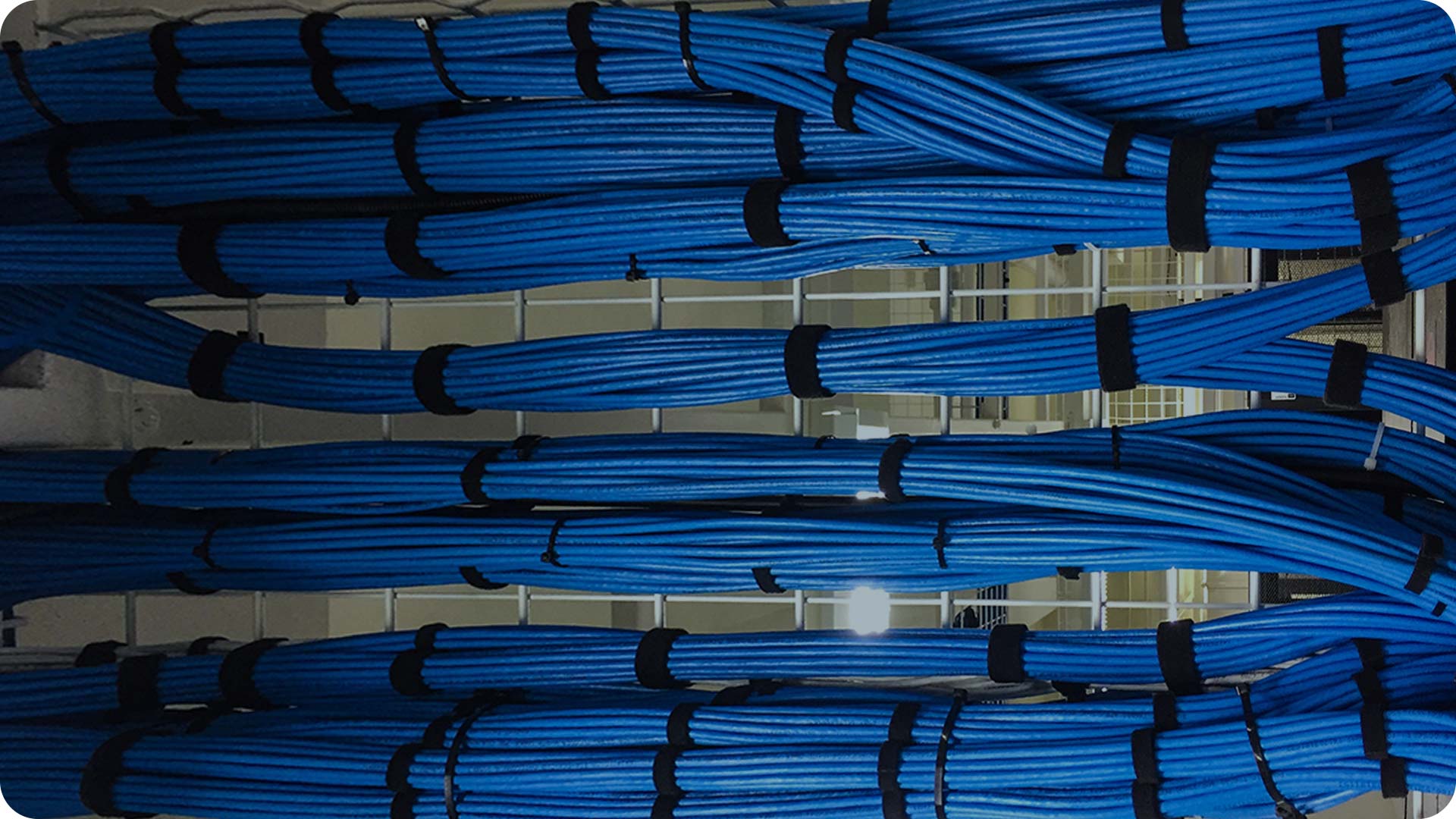Compelling Use Cases
Wired backbone networks have always struggled with moves, adds, and changes, which occur with great regularity in today’s enterprise networks. It is an activity that is slow, expensive, and very disruptive to business processes. In today’s fast-paced business environment, a new approach is required that allows the network to quickly adapt to business imperatives and not the other way around. The use of Airvine products and technology help with some of the most difficult problems that companies face in adapting to this new bandwidth-hungry world.

Wi-Fi Backhaul
Legacy solutions based on structure wiring have dominated enterprise backbones for decades. Newer standards like Cat6 and 7 are capable of delivering the throughput required to support emerging Wi-Fi 6/6E deployments, but what about older buildings that still have Cat5 deployed? A decision must be made on when and how to upgrade these backbones.
Adding Cat6 and 7 gives the required throughput, but it’s a solution that struggles with moves, adds, and changes. The Airvine approach delivers not only the required throughput but also the flexibility to support rapid and regular network reconfiguration. Deployments can roll out in one of two ways:
- The Airvine technology can be deployed as an overlay to the older Cat5 wiring which stays in place and is only there to support Wi-Fi 6 Access Points in selected locations. There might only be a few departments that need broadband to the desktop, so why go to the expense of upgrading the entire network.
- The entire Cat5 deployment can be decommissioned and replaced with an Airvine network. This would be the case if Wi-Fi 6 is to be deployed building-wide or campus-wide. The Airvine solution, when deployed in a ring, also increases applications availability across the entire enterprise.
Another great advantage of a wireless backbone is effortless, moves, adds, and changes. When it becomes necessary to modify business processes and move groups from one location to another, all that is required is to unplug the Wi-Fi 6 Access Point and the Airvine WaveTunnel™ node and move both to a new location. The WaveTunnel node would reacquire a signal at its new location and the system would be up and running in a matter of minutes.
In addition to backhauling the Wi-Fi 6 Access Points, the Airvine WaveTunnel nodes can also provide power to locally attached AP’s using POE (power-over-Ethernet).

Retrofitting Older Buildings
This is an area where legacy solutions based on Cat6, or even Cat7 copper cabling can really struggle. It is especially severe if these are historical or heritage buildings. Not only are they made of older and much more substantial building materials like stone, brick, and concrete, but there are often a variety of rules on what you can and cannot do when trying to pull wire. Drilling through walls is often prohibited and this usually forces cable conduit to follow a very circuitous path to get to its destination.
The Airvine solution can install in a heritage building just as easily as it does in a modern building. If the walls are too thick and offer too much path loss to allow a 60 GHz signal to propagate across a room and through the wall and on to its destination, then an Airvine node can be placed against the wall. The signal only needs to propagate through the wall and is received by another radio on the other side. This is made possible by the near field capabilities of the Airvine WaveTunnel™ nodes which generate a very a dispersed signal pattern that delivers maximum energy through the wall to the radio on the other side.
Airvine is ready to support backbone upgrades in modern office buildings based on sheetrock or older heritage building that make extensive use of stone. The deployment in either case is very straightforward.

Moves, Adds, and Changes
Legacy solutions utilizing Cat5, Cat6, and now Cat7 copper cabling have dominated enterprise backbones for decades. Newer standards like Cat6 and 7 are capable of delivering throughput approaching 10 Gbps at distance of up to 100 meters. These higher speeds sound compelling, but they come with some serious limitations. Wired backbone networks have always struggled with moves, adds, and changes, which occur with great regularity in today’s enterprise networks.
Techniques like zone cabling have had some success in making the re-configuration process less painful, but technicians must still be brought on-site to pull wire through walls and ceilings. A process that is slow, expensive and very disruptive to business processes. In today’s fast-paced business environment, a solution is required that allows the network to quickly adapt to business imperatives and not the other way around.
Solutions are beginning to emerge that leverage breakthroughs in radio engineering along with the enormous capacity of the millimeter-wave bands to backhaul data traffic at multi-gigabit speeds and with all the flexibility that comes with wireless technology.
The all-wireless backbone makes for an effortless, moves, adds, and changes process. When it becomes necessary to modify business processes and move groups from one location to another, all that is required is to unplug the Wi-Fi 6 Access Point and the Airvine WaveTunnel™ node and move both to a new location. The WaveTunnel node would reacquire a signal at its new location and the system would be up and running in a matter of minutes. The advantages here are significant:
- Eliminates the OPEX impact of having to pull wire to support network changes, which can be anywhere from $200 to $500 for each affected cable drop.
- The delay to get a technician on-site to pull wire can impact business processes.
- The process of actually pulling the wire can cause further disruptions.
- In certain types of older buildings (historical and heritage) re-wiring becomes even more challenging due to restrictions in where the conduits can be laid.
The requirement to support regular moves, adds, and changes comes up in a lot of Enterprise verticals including education, healthcare, warehousing, manufacturing, etc. The case for wireless backbones is compelling as they can easily match or exceed the throughput of Cat6/7 copper cabling with the added flexibility that comes with wireless technology.

Backbone Extension
This can prove to be a challenge for legacy copper cabling which is limited in distance to at most about 100 meters. Beyond that, it is necessary to start looking at pulling fiber, which is a much more expensive option. There can also be challenges with right-of-way in certain situations that are very difficult to overcome with cabling of any type.
This might be the case when connecting two buildings together with a road or railroad tracks in the path. Backbone extension also comes into play at a hospital that is trying to connect remote COVID tents in parking garages or parking lots back to the main building. Yes, they control right-of-way, but it’s still a challenge to pull wire across hospital grounds.
The Airvine solution can extend beyond the rated distance of 100 meters by simply adding another WaveTunnel™ node to act as a repeater. This can be used to connect more remote locations, even when they aren’t line of sight. It is also an excellent solution for linking two buildings together across railroad tracks, or a road.
The flexibility to easily extend the range in any situation allows the Airvine solution to support the business agility that is so important in today’s networks.

Future Proofing for Wi-Fi 6, 5G, and IoT
Wi-Fi 6 Access Points are not the only access networks that will need to be backhauled going forward. There is tremendous interest in 5G deployments, most of which are focused at indoor locations. 5G is the latest generation of cellular technology that is being deployed primarily for data traffic, and most data traffic is consumed indoors.
These small cells will be owned and deployed by service providers as they run in licensed spectrum, but they will need to be backhauled by an Enterprise network. Since 5G can also carry voice, it may be necessary to give priority to 5G traffic. This is certainly possible with an Airvine deployment.
IoT (Internet of Things) is also an area that needs support in a next generation enterprise backbone. IoT covers a huge laundry list of applications that run the gamut from sensors to tracking devices and video cameras to remote temperature measurement equipment (COVID related) and everything in between. Some applications are latency-sensitive, and others need enormous amounts of bandwidth. A backbone is required that can be quickly deployed and just as quickly reconfigured to address a wide variety of applications that are either already here or on the horizon.
Flexibility and business agility are key concerns in many Enterprise vertical markets for these reasons and many more. The all-wireless backbone that can operate at multi-gigabit rates is the perfect solution.